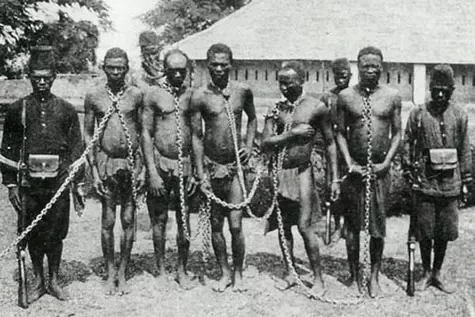 The bloody history of Rwanda
The bloody history of RwandaBy Andy Ford
The Tory government, by an act of parliament, has deemed that the Central African state of Rwanda is ‘safe’. But the history of this country would suggest otherwise. Here, Andy Ford looks at the bloody history of that country, the legacy of its colonial past.
The Rwandan genocide of April-June 1994 must rank as one of the most horrifying events in modern history. Around 900,000 people are estimated to have died, often at the hands of thousands of their neighbours and workmates.
Various explanations were given in the mainstream media for the 1994 massacre, from the ‘innate savagery of Africans’, to the cynical manipulation of ancient tribal hatreds by politicians. It is a disturbing story, but, in the words of the philosopher Spinoza, our job is “not to laugh, not to cry, not to hate, but understand”
Marxists understand the genocide as a manifestation of the poisonous effects of capitalism and its ‘highest form’ – imperialism. There are aspects of historical materialism, imperialism and the permanent revolution to be seen in the Rwandan story.
Rwanda before the colonialists
Rwanda is a small country in the heart of Africa. It has fertile volcanic soil, plenty of rain and it lies thousands of feet above sea level, so that malaria does not affect humans and the tsetse fly does not affect cattle. Therefore it has always had a high population density and was relatively remote from European influence.
Pre-colonial Rwanda was a society gradually moving into a state form, with the emergence of a ‘King’ and state from a background of clan society. It was a society similar in some ways to Celtic Britain – an oral pre-literate warrior society of petty battles and cattle-rustling, where the greatest virtue is courage in battle. It was what Engels, in his book Origins of the Family, Private Property and The State, termed ‘barbarism’, in the words of the time.
King Rwabugiri (1860-1895) consolidated the first real kingdom by conquering and co-opting other clans and chiefdoms. It was a society based on cattle – the ubuhake system – where some farmers with cattle ‘lent’ those cattle to clients in return for service and loyalty, and/or gave access to land for pasture. For the less well off there was ubureetwa – grant of the use of land in return for unpaid labour, and akaze which was just unpaid labour.
‘Tutsi’ was a loose expression for those with cattle, ‘Hutu’ for those without, but movement and inter-marriage between the groups was quite common, and they spoke the same language and lived and inter-mingled with each other.
In her book, The Cohesion of Oppression: Clientship and Ethnicity in Rwanda 1860-1960, Catharine Newbury, quotes a Belgian missionary as follows: “The term Tutsi and Hutu refers not to descent, but to social condition or wealth, especially as regards cattle. Whoever is a chief or who is rich, will be referred to as Tutsi”
The legacy of colonialism in Rwanda
Rwanda had been ‘allocated’ to Germany in 1884 at the Congress of Berlin, which aimed to manage conflicts among the European powers for colonies in the ‘Scramble for Africa’. These conflicts, like the Fashoda Incident of 1898, which pitched Britain against France, or the ‘Agadir Crisis’ of 1911, where Germany clashed with France, threatened to detonate a European war. So attempts were made to ‘manage’ the friction, but at the expense of Africans, and indeed it has since created decades of conflict across the continent.
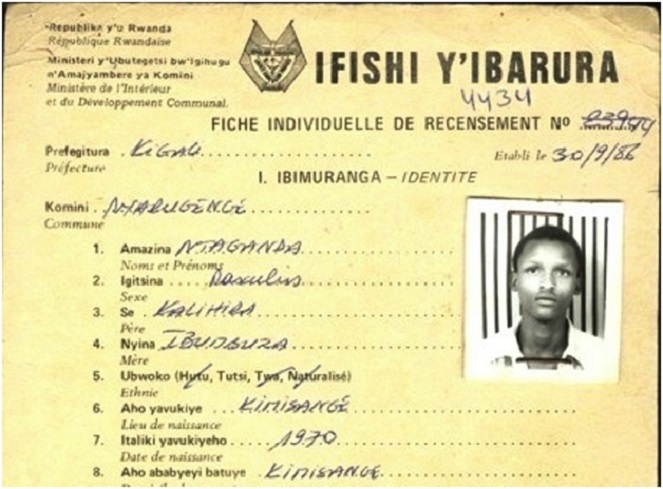
Germany could not actually get to its new possession until 1894, when Count von Gatzen reached the royal court at Kigali. The Germans had little impact on their remote colony, although they did deter Belgian incursions from Congo, which was a Belgian colony.
It was impossible for a very few Germans to control millions of Rwandans thousands of miles from Germany, and so they sought and found local stooges and proxies from amongst the upper layer of Rwandan society. So began the process that was to culminate in genocide a century later.
In 1917, during World War One, Belgium invaded Rwanda from Congo, in co-operation with Britain. Their colonial policy tended to balance between Britain and France and within Rwanda they set about thoroughly exploiting the country and to do this, they had to find alternative stooges and proxies, favouring some chiefs with weapons and support in return for their help in extracting taxes and raw materials.
The pre-existing exploitation of the peasants (Hutu) was intensified by the Belgians, through the chiefs (Tutsi). “Chiefs who co-operated with the Belgians”,Newberry writes, “saw their power and wealth enhanced; in return they were expected to impose heavy burdens on their people, to supply porters and food to Europeans in the early period, and later to carry out forced cultivation and road building”
‘Traditional’ forms of service
The chiefs took produce or enforced labour, enforced by evictions and violence, often claiming that this was within the ‘traditional’ forms of service. In doing this, they had to satisfy not only their own needs but also those of the Belgian colonialists,
Newbury, quoting a Rwandan peasant: “They would come and take your cow, on the pretext that you were a rebel. You couldn’t say anything, for the least resistance they would put you in chains or sometimes kill”.
There was a growth in ubureetwa and ubuhake as more peasants became the clients of the better-off farmers and chiefs. Without protection, they were liable to lose their cattle or land, or both. But this protection came at the cost of increasing exploitation.
For instance, in 1931, Belgian decided to increase coffee production – and they required each ‘Tutsi’ chief to organise cultivation of 1,000 coffee plants. So the chiefs were to force their clients under ubureetwa grow 54 each, as unpaid labour.
The Belgians incorporated Rwandan customs like ubuhake and ubureetwa into colonial law, but a ‘Hutu’ peasant in dispute would find himself appealing from one Tutsi chief to another Tutsi chief in the native court. The Belgians had perverted and intensified the traditional obligations to exploit their colony. They had, in effect, commodified pre-capitalist forms of labour.
Origins of division: colonialism and profits
In the 1920s and 1930s, Belgian administration became more efficient and in 1921 they decreed that those who owned more than ten cattle would pay 10 francs tax per cow; those with less than ten paid 5 francs. This forced a division between those with cattle and those with few or none. Then they set up the notorious 1933 census, which compelled everyone to be identified as ‘Tutsi’ (15%), or ‘Hutu’ (80%) or ‘Twa’ (5%), the Twa being the original hunter-gather population of the country.
During the Second World War, the market for Rwandan goods boomed and a lot of roads were built with unpaid labour on the akaze system, which became increasingly hated. The Belgian aim was to use the fertile soils and plentiful people and cattle of Rwanda to feed industrial and mining centres in their other, larger colony, Congo.
Their exploitation, through the Tutsi chiefs, intensified with forced cultivation of cash crops (hypocritically said to be for ‘educational purposes’), drainage of marshes for coffee, conscription for work in the mines of Congo or forced settlement of cleared forest lands. The peasants were ruthlessly squeezed, so much so that 300,000 died in a ‘famine’ in 1943, despite food being exported. “Thus for several decades the country became a vast camp of forced labour” (quoted by Newbury). It was not a lot different to the Nazi forced labour system in occupied Europe.
An ‘ethnic divide’ manufactured by colonisers
The forced labour systems had few supporters postwar and could hardly be sustained in the face of mass opposition. Ubureetwa was abolished in law in 1949 and ubuhake in 1954, although it continued in many areas.
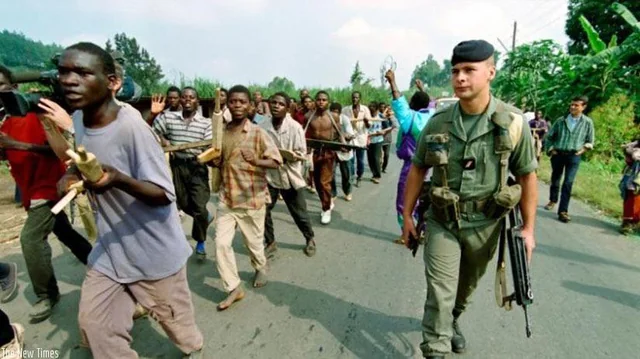
But the Belgian policy of educating only Tutsi and using them to staff the state and commercial posts kept power in the hands of the Tutsi minority. It also allowed a very few Belgians to dominate and rule four or five million Rwandans. It was classic colonialism, using divide and rule, as first used by the British in Ireland, and later in Sri Lanka, India, and many other places. In the words of Karl Marx about British imperialism in India, “Britain ruled India with an Indian army, maintained at Indian expense”, and the same was true in Rwanda.
Even the Belgian governor in 1930 was compelled to admit that “Without the collaboration of indigenous authorities the occupying power would find itself powerless and faced with anarchy”, (quoted in Newbury).
But in the case of Rwanda, the ‘ethnic divide’ was one manufactured by the colonisers in the first place, rather than a pre-existing one. Despite Belgian pseudo-scientists putting forward racist ideas that the Tutsis came from North Africa and conquered ‘Bantu peasants’, or even that their skulls had different shapes, the ‘Tutsi’ and ‘Hutu’ were descended from the same people, spoke the same language and followed the same religion.
The 1959 revolution
As time went on, a Hutu consciousness emerged amongst the rural masses, led by Hutu traders and lower level Hutu clerical workers in the towns who were excluded from higher posts in the colonial administration. Two of the main leaders were journalists on Catholic papers. These would-be leaders could only get a hearing by harnessing the simmering rural anger at exploitation and the unequal ownership of land.
They began to agitate against the royal court and Tutsi domination in ethnic terms, calling for the abolition of forced labour, for paid work with contracts, for rural credit and the admission of Hutu to schools and colleges. It was a worthy democratic programme, but unrealisable under capitalism, and it was often framed around ‘Hutu’ identity.
But Marxists would argue, along the lines of Trotsky’s theory of The Permanent Revolution, that such democratic demands could only be satisfied under socialism. Without socialism the Hutu demands amounted to taking from the Tutsi to give to the Hutu. The Hutu leaders themselves depended on the division of Rwandan society. They even opposed de-tribalising identity cards, on the grounds that they wanted to measure progress towards equality.
The Belgian colonial rulers vainly tried to maintain their system by experimenting with ‘ethnic’ representation in the emerging representative institutions, but they failed to really alter the situation in the countryside. Due to gerrymandering by the Belgians, only 6% of the advisory State Council was Hutu, despite constituting 80% of the population.
The Hutu counter-elite mobilised around a call for ‘majority rule’, through the Party of the Hutu Emancipation Movement (PARMEHUTU). The Hutu movement itself began to polarise between those who emphasised an anti-Tutsi stance and those calling for equality for all groups.
In November 1959, there was a mass uprising of Hutu, following the beating of a Hutu chief by Tutsi youths. Mob violence spread across the country, with brutal suppression attempted by better-organised and armed Tutsi forces. The Belgians were left suspended in mid-air without their native collaborators. They could only re-establish control by appointing Hutu chiefs to the state administration, and abandoning their ‘Tutsi’ supporters to their fate. At elections in 1960, Hutu parties won 84% of the vote. Independence followed in July 1962.
‘Independence’ and a new form of exploitation: neo-colonialism
With the legacy of division and exploitation, and continuing meddling by Belgium, now trying to rule through the Hutu elite, government in Rwanda was never stable up to the seizure of power in 1973 by Juvenal Habyarimana, in a coup backed by France, seeking ‘stability’ through a one-party state.
The Belgians had tried to balance between France and Britain, but it was a precarious strategy. The 1973 coup was proof that tiny Belgium had no hope by itself of maintaining the neo-colonial domination of Rwanda, and Rwanda passed into the French ‘sphere of influence’. It was a one-party, anti-communist dictatorship, and a stooge of the French.
The dictator, Habyarimana, regularly got over 99% of the vote at rigged elections, but he gradually alienated his support, so that even Hutu leaders deserted him or fled abroad, until his main source of support was the ‘Akazu’ group of those closest to him, mainly drawn from his home region. His regime also depended on fanning the flames of ‘ethnic’ hatred, albeit based on the same imaginary ethnic divisions devised by the Belgians.
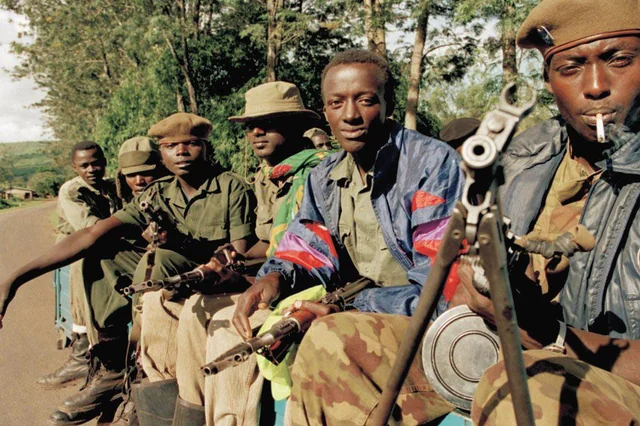
His government relied increasingly on Hutu extremism to make up for its lack of progress on economic and social matters. More than 90% of the population scraped a living as subsistence farmers and less than 5% had access to electricity. In 1989, the price of coffee collapsed and Habayarima, under French instructon, accepted an IMF ‘adjustment’ programme which impoverished many of the population even more.
Utilising these grievances, a mixed Tutsi and Hutu force of the Rwandan Patriotic Front (RPF), backed by the US, entered Rwanda in 1990 and was only prevented from overthrowing the regime by a French intervention in February 1993.
1994 and the horrific genocide
Habyarimana’s regime was losing support: after all, Hutu extremism could not feed people or give them clean drinking water or electricity. Habyarimana was forced to look for an agreement with the RPF, and the Arusha Accords were signed in 1993,by which France and the USA tried to impose a power-sharing government.
But in April 1994 ,Habyarimana’s plane was shot down, probably by the Hutu extremists around the Akazu. With French complicity they had amassed weapons (including 500,000 machetes), lists of Tutsi, and had organised a militia – the Interahamwe. In the horrific 3 months that followed, nearly a million people were killed, mostly Tutsi and mainly with machetes.
The French still had armed forces in Rwanda and they largely stood aside. They had been aware of the plan, but effectively tolerated it to keep their clients in power. Their ‘peace keepers’ in the country ignored the massacres and even gave a safe haven to the killers, and when they were defeated by the RPF ,they shielded them as they fled to Congo.
The various explanations
The French especially, to minimise their own responsibility for the slaughter, talk about ‘ancient hatreds’ among Rwandans. The far right (and some tabloids) will simply say it was an example of ‘innate’ African savagery, or some such nonesense. The more sophisticated version of these racist explanations is that unscrupulous politicians gained and kept power by using tribalism and ethnic identity.
This, unfortunately, is the one given by Human Rights Watch in their report None Left to tell the Story, in which the blame for the massacres is still attached to the Africans. But such explanations do not really explain what happened. As Newbery asks in her book “Why do the leaders gain a base? Why do the followers follow?”
Another writer, Jared Diamond, in Collapse How societies choose to Survive or Fail, shows the holes in the ‘ethnic hatred’ story. He points out that on Ijwi Island in Lake Kivu, which is ethnically Rwandan, but part of Congo, and so not subject to the same manipulations of Belgian imperialism, the identities of Tutsi and Hutu are fluid and quite unimportant.
Also, all over Rwanda, the Twa people, who are neither Tutsi not Hutu, were attacked as well. In a region of north-western Rwanda, where there were few Tutsi, Hutu were murdered in large numbers. And the Interahamwe attacked not just the Tutsi, but also moderate Hutus – because their murderous activities were not just ethnic hatred, but desperate political acts designed to save the regime from its opponents.
Jared Diamond gives a vivid portrait of life in Rwanda just before the genocide. It is a picture of high and increasing population density, leading to over-cultivation, soil erosion, and sub-division of land holdings to levels far below what was viable, leading to widespread malnutrition. In the villages there was a polarisation of land holdings between ruthless, richer ‘kulaks’ and the landless poor.
Land disputes, especially between neighbours, fathers and sons, widows and brothers-in-law, soared with ever-increasing referrals to traditional courts, and immediately before the genocide there was a huge rise in legal disputes. The whole of society was raised to an unbearable degree of tension, and this exploded with terrifying savagery in genocide.
But what Jared Diamond does not acknowledge, is that capitalism and imperialism stand condemned at every turn. He concentrates on the population factors at the expense of the political factors:
*Belgian imperialism, in effect, created Tutsi and Hutu identities so they could loot the country.
*Belgian companies and colonial administrators twisted and intensified traditional Rwandan forms of labour to maximise their profits.
*After independence the Rwandan rulers could not develop the country, even in a period of worldwide boom, or free it from foreign domination – first Belgian, and then from 1979 French.
*The French-backed dictatorship gradually lost support and came to rely more and more on Hutu extremism.
*As the country stagnated tensions in the countryside mounted.
*The French supported the genocidal forces to maintain Rwanda as their client state. If they had not blocked the RPF in 1993, the genocide would never have even have started.
* Once the killings began French protection of the Interahamwe meant that thousands more people were killed than would have been the case.
 US to sanction IDF unit for rights abuses – too little, too late - By John Pickard The Biden administration has set some alarm bells ringing in Jerusalem by its threat to impose sanctions on a unit of the
US to sanction IDF unit for rights abuses – too little, too late - By John Pickard The Biden administration has set some alarm bells ringing in Jerusalem by its threat to impose sanctions on a unit of the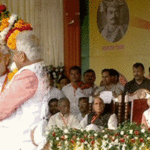 India: Modi and the rise of the billionaire Raj - By Michael Roberts A general election in India starts today. 970m Indians, more than 10% of the world’s population, will head to the polls in
India: Modi and the rise of the billionaire Raj - By Michael Roberts A general election in India starts today. 970m Indians, more than 10% of the world’s population, will head to the polls in The tepid twenties - By Michael Roberts The semi-annual meeting of the IMF and World Bank starts this week. The agencies and their invited guests will discuss the state
The tepid twenties - By Michael Roberts The semi-annual meeting of the IMF and World Bank starts this week. The agencies and their invited guests will discuss the state Iranian attack on Israel: higher risk of regional war? - By John Pickard The Iranian missile and drone attack on Israel over the weekend has changed nothing fundamental in the political and military balance in
Iranian attack on Israel: higher risk of regional war? - By John Pickard The Iranian missile and drone attack on Israel over the weekend has changed nothing fundamental in the political and military balance in China’s unfair ‘overcapacity’ - By Michael Roberts The recent nonsense issued by the US Treasury Secretary Janet Yellen on China’s ‘overcapacity’ and ‘unfair subsidies’ to its industries is particularly
China’s unfair ‘overcapacity’ - By Michael Roberts The recent nonsense issued by the US Treasury Secretary Janet Yellen on China’s ‘overcapacity’ and ‘unfair subsidies’ to its industries is particularly

